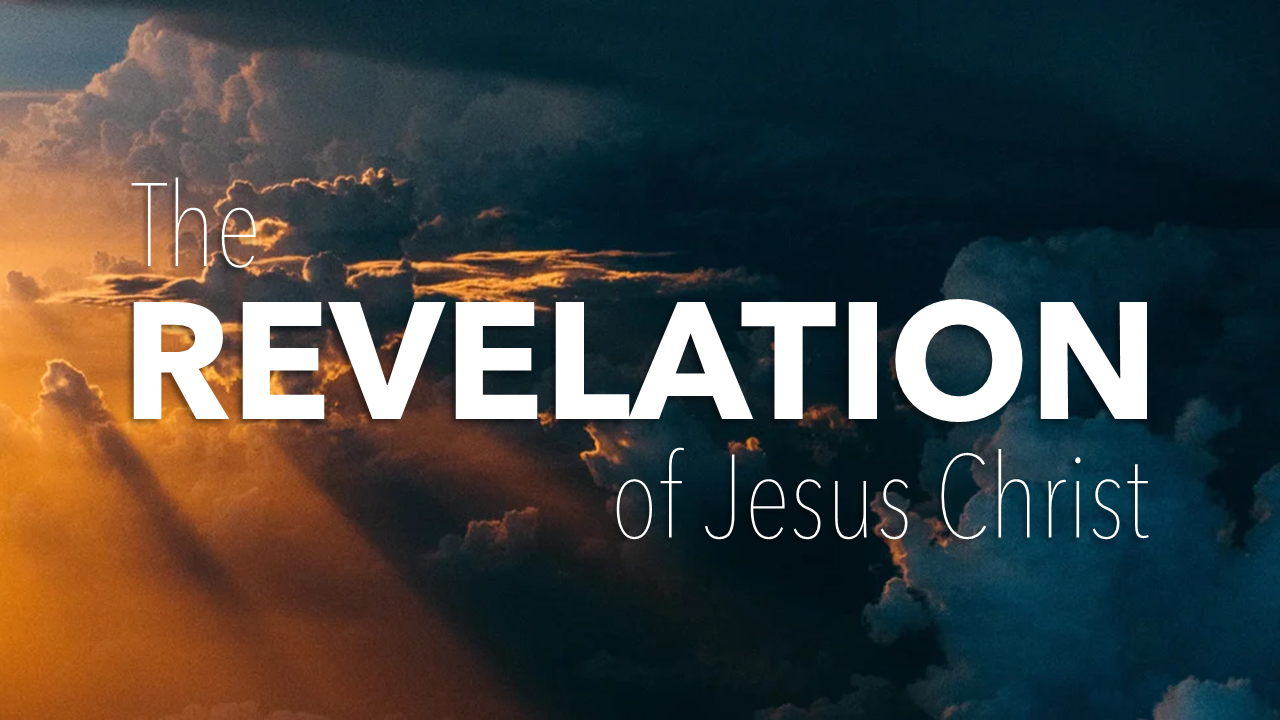More Dramatic Buildup to the Seven Bowl Judgments
Revelation 14:1-20
In Rev 14, John continues his dramatic but gradual buildup to the outpouring of God’s climactic bowl judgments, an arch that began in Rev 12 and will end at Rev 16.
This chapter stands in striking contrast to the former chapter:
- Ch. 13 introduces the Beast (the antichrist) and those who follow him, but Ch. 14 opens with the Lamb (the real Christ) and those who follow him.
- Ch. 13 portrays an ominous threat against God and his people, but Ch. 14 portrays announcements and songs of triumph for God and his people.
Through angelic activity and illustrative depictions, this chapter foreshadows in essence what will happen in actuality through the impending bowl judgments. John presents this material in three sections, each beginning with “then I looked/saw,” which is the same Greek phrase each time.
A Preparatory Scene on Earth and Heaven (Rev 14:1-5)
This vision reintroduces previous key elements in Revelation:
- the 144,000 sealed witnesses of God (Rev 7:1-8)
- voices from heaven
- the sound of many waters (Rev 1:15)
- loud thunder
We also return to God’s heavenly throne room for worship with the four living creatures and the twenty-four elders in view.
Christ’s appearance on Mt. Zion once again echoes themes of Psa 2, which foreshadows when Christ will defeat the pagan nations and rule from Jerusalem. It also previews what Christ will do at the end of the Tribulation when he defeats the antichrist at Armageddon before this reign (Rev 19:11-21).
Since we studied these 144,000 witnesses in Rev 7:1-8, we won’t do so again here. We’ll note, however, that as John points out, they not only abstained from adultery and fornication but from marriage altogether. This doesn’t make singleness better than marriage, but it does show a close affinity to Christ by living as Christ lived. This freedom from the obligations of marriage enabled them to be more flexible and freer to do whatever they could do as witnesses for Christ during the Tribulation. Though they will follow him into a great degree of suffering, they would also follow him in victory at the end.
A Proclamation from Three Angels (Rev 14:6-13)
This section features the activities of three prominent but unnamed angels.
Angel 1 (Rev 14:6-7)
This angel announces to the world the good news that the God who made the world would soon judge the world and make all things right forever. Perfect justice would be fulfilled. The proper response to this news will be to fear and worship God. This stands in marked contrast to how people will fear and worship the antichrist through his false prophet and talking statue.
Angel 2 (Rev 14:8)
This angel foreshadows many of the events that will unfold in Rev. 16-18.
Of note, John names Babylon for the first time. John and the prophets point to Babylon as a model or representation of all pagan empires – past, present, and future – that oppose God, his kingdom, and his people. Though Babylon destroyed Jerusalem and forced Israel’s inhabitants into captivity in 586 BC, its ungodly approach and mentality mark so many other powerful, pagan nations.
This overthrow of Babylon which the angel foretells will occur in real-time in Rev 18:2 at the close of the seven bowl judgments. This moment also echoes how Isa 21:9 and Jer 51:8 foretell the ultimate collapse of Israel’s well-known oppressor.
This allusion also includes empires like Rome. Babylon as a figure blends established economic and religious factors (laws, policies, idolatry, immorality, etc.) that oppose God’s person and plan. This amalgamation of ungodly beliefs and policies will reach its zenith in the Tribulation.
Some Bible interpreters suggest that this system will consist of such notable entities as the Catholic Church or Islam, socialism or capitalism, and so on. We cannot say for sure. It seems best to view all these economic and religious factors, to one degree or another, as different iterations and variants of the same theme – economic, political, and religious dynamics that reflect aspects of a godless opposition to God, his kingdom, and his people.
One key feature of this system will be that it forces people to accept and engage in an immoral lifestyle. We can certainly see this growing pressure today.
Angel 3 (Rev 14:9-13)
This angel foreshadows God's judgment.
It reverses the “drinking” image of the second angel. This signifies that though the wicked will force their immoral principles on others for a season, God will force his anger on them in the end in full measure without end.
The “fire and burning sulfur” previews the final punishment which the beast and false prophet will receive in the lake of fire (Rev 19:20), just as Satan (Rev 20:10) and all unredeemed humanity will also suffer (Rev 20:13-15; 21:8).
That this judgment will occur “in the presence of the angels and Lamb” most likely refers to its initial moments. When the wicked are given their sentence, the angels and Lamb will witness it. This will be an eternal and permanent sentence with no possible release.
Here John offers another word of pastoral advice to persevere through suffering (cf. Rev 13:9-10). He gives this advice prophetically to those believers who will endure unprecedented suffering in the later stages of the Tribulation before Christ’s return. Those who persevere in faith and loyalty to the Lamb against the antichrist’s agenda will suffer excruciating things, but God will especially reward their costly sacrifice.
John adds a special note here, a comment which the Holy Spirit himself not just reveals through inspiration but rather speaks directly in the first person. He says that those who die for their loyalty to the Lord will be especially blessed because (1) death will give them rest from their suffering, leaving their suffering behind for good, but (2) they will not leave their acts of faith and service behind. Their acts of faith will persist for eternity and be rewarded.
Reaping the Earth’s Harvest in Judgment (Rev 14:14-20)
This final section presents the imagery of two harvests, a grain harvest (Rev 14:14-16) and a grape harvest (Rev 14:17-20).
The identity of this “one like a son of man” is somewhat ambiguous. It could portray either Christ or an angel.
- If Christ, then it corresponds with Rev 1:13 and Dan 7:13, from which Christ’s NT title “Son of Man” comes.
- If an angel, then it is one “like” but not “the” Son of Man, resembles the description of another angel in Dan 10:16, and fits well with Rev 14:15 and 17 saying “another angel” came, indicating that this being in Rev 14:14 was also an angel. It also fits with the similar activity of an angel in Rev 14:19.
Still, Rev 14:6, 8-9 features previous appearances of angels, so “another angel” could easily refer back to them, not “the son of man.” Also, the only other places where John alludes to Dan 7:13 in Revelation (Rev 1:7, 13) clearly refer to Christ, so we are on good ground to assume that he’s doing the same thing here and presenting us with Christ.
The sickle describes a long, curved blade mounted on a long handle for cutting stalks of grain in the field. Mark 4:26 refers to the same kind of sickle in one of Christ’s parables about the kingdom, which depicts the good and bad growing up together in the world, and in the end, Christ will harvest it all and sort out the good from the bad. Here, however, the harvest appears to only affect the unbelieving, unrighteous of the world. John describes the sickle as “sharp,” emphasizing preparedness and readiness for decisive judgment.
This grain harvest as a picture of divine judgment on the wicked originates from OT passages like Joel 3.
It’s worth pointing out that Christ doesn’t act independently here in judgment, but he acts in concert with instructions from the Father in heaven, as delivered by an angel (Rev 14:15; cf. John 5:19-22). This demonstrates that Christ’s humble cooperation with the Father was not just a feature of his incarnate existence but is how they always relate to one another.
The second harvesting, this one of grapes, also reflects OT imagery of divine judgment (cf. Joel 3:13). This illustration is more dramatic and graphic than the first, but the repetition emphasizes that judgment waiting will be done and judgment will come swiftly.
- That the grapes are “extremely ripe” or “fully ripe” underscores this fact.
- That the grapes are not just cut down and harvested but pressed and trampled further underscores the vigor of God’s judgment.
That this judgment will occur “outside the city” contrasts with how the Antichrist and his people will have taken over the city (just as empires have done to Jerusalem for millennia). Now, however, they will be evicted for judgment since Christ will establish his presence in the city instead (Rev 14:1). From there he will govern the millennial kingdom.
Rev 14:20 ends on a grotesque and ominous note, more like a horror movie than a happy farming story. When these grapes in the vision are pressed, blood (not juice) flows and gushes out in a profuse amount. As John describes it, the blood pooled up to the height of a horse’s chin and the length of 184 miles.
- This distance equals the length of Palestine north to south.
- It is also the distance of the Megiddo Valley where a decisive battle will be fought between Christ and the antichrist’s forces (Rev 16:16).
Whether this is a literal measurement (which seems preferable due to its specificity) or descriptive of major bloodshed in general, it sets the tone for John’s description of the seven bowl judgments which are about to be poured on the Earth, culminating in the bloody battle of Armageddon.
Key Takeaways
Christian music encourages us to persevere through suffering.
This is not the first time we’ve encountered music from heaven in Revelation. In this instance, we read about music like a torrent of waterfalls, the roll of thunder, and the melody of many harps accompanying what John calls a “new song” (Rev 14:2-3). Though we don’t know what this new song will be, we have our own songs today that speak of Christ’s saving work in our lives and his coming victory and kingdom. It’s music like this that we should sing for it inspires us to persevere through our suffering.
With God’s help, we must resist society’s pressure to accept immorality.
This is not a new challenge, but we should acknowledge it, nonetheless. From idolatry of the Canaanites around Palestine to the secular humanism of our day, immoral lifestyles have always been pressed upon God’s people. We should depend on God’s spirit to resist this powerful pressure. Though we love people who practice immorality, we can neither condone nor cooperate with their immorality.
Don’t trade temporary comfort for eternal torment.
Rev 13-14 paints this stark contrast on the canvas of the Tribulation. People will face the dilemma of choosing allegiance to the Antichrist to meet their material and physical needs. Those who refuse to submit to him will be persecuted and killed in horrible ways. Yet those who make this fateful choice will only receive their sustenance for 3.5 years or less. When Christ returns in judgment, they will suffer horribly for eternity while those who suffered for Christ will be richly rewarded forever. We should learn from this lesson and be sure that we also do not exchange personal and material comfort (even daily, physical needs) for loyalty and service to Christ.

